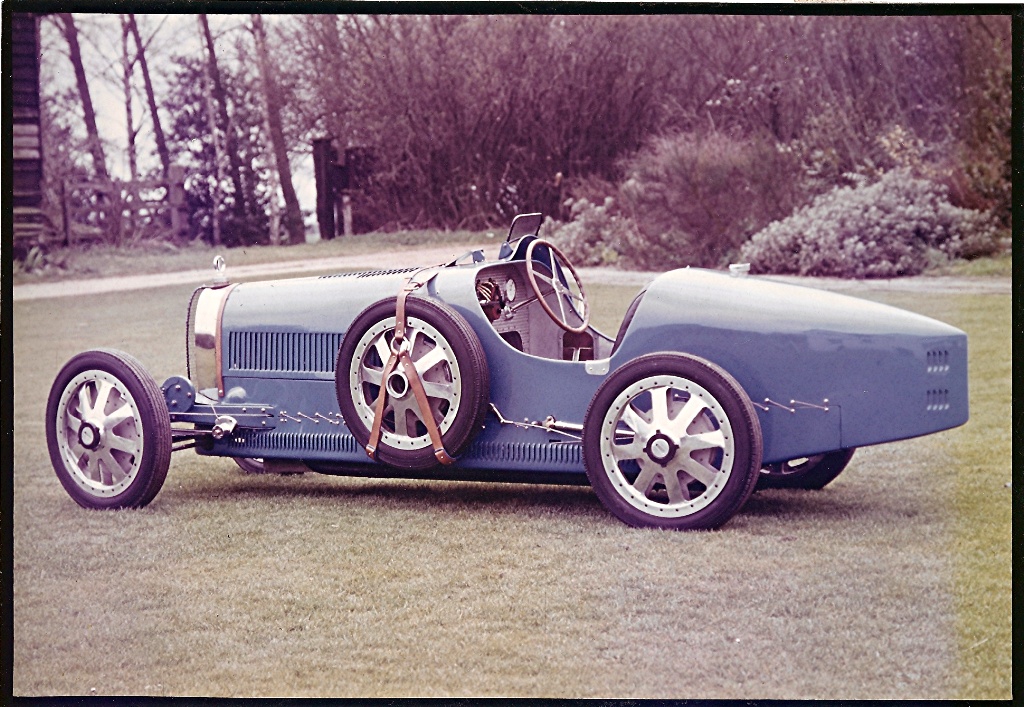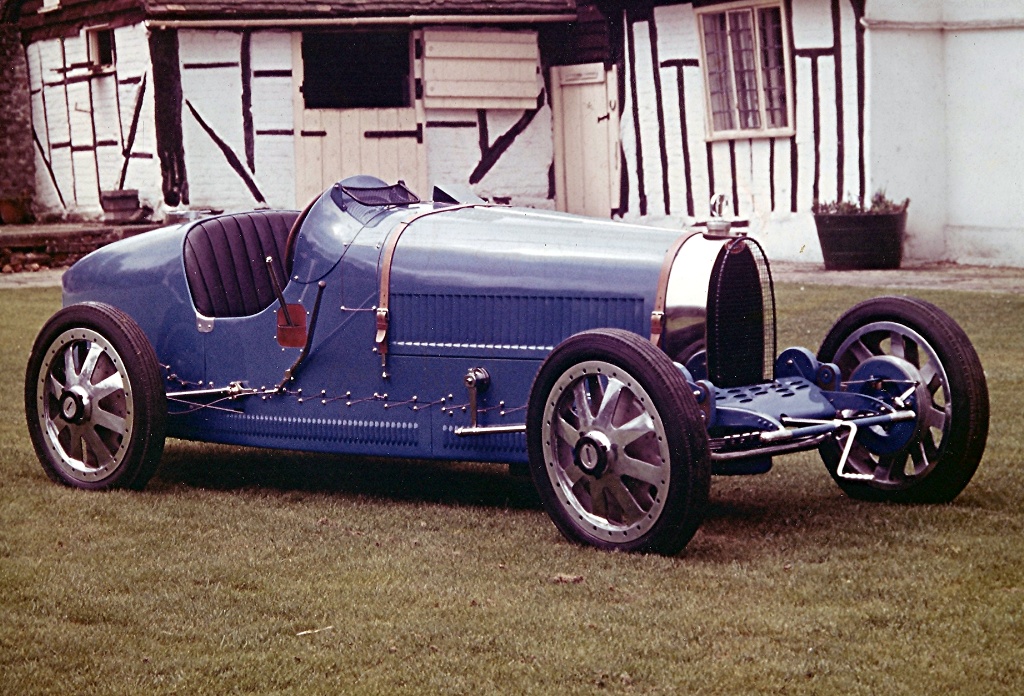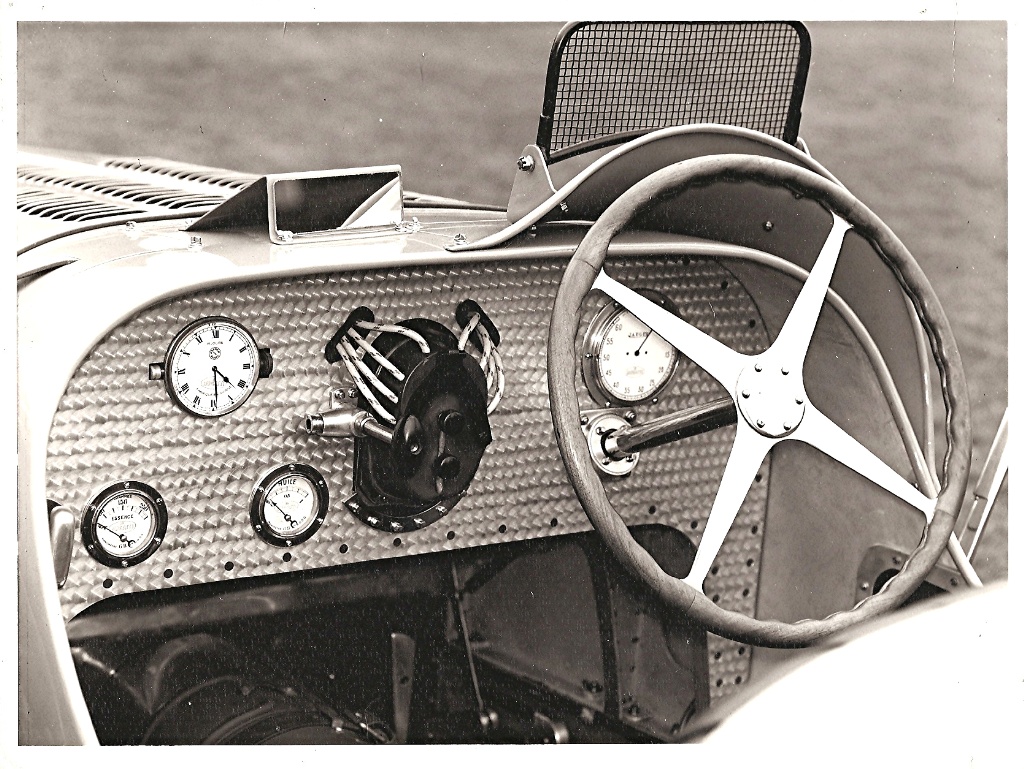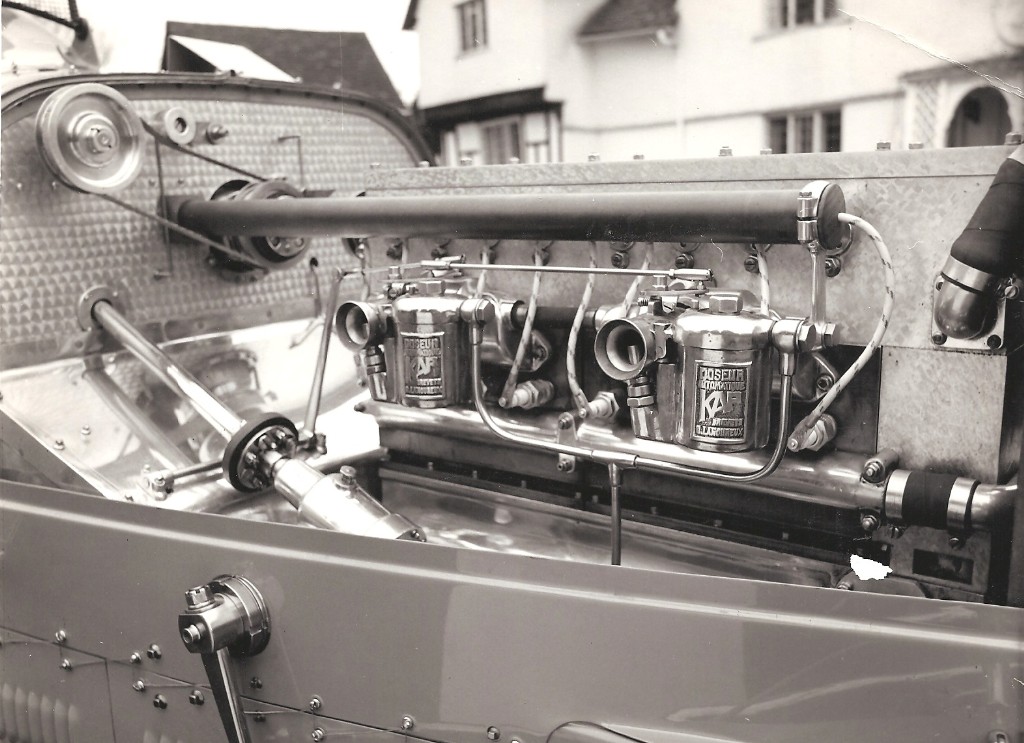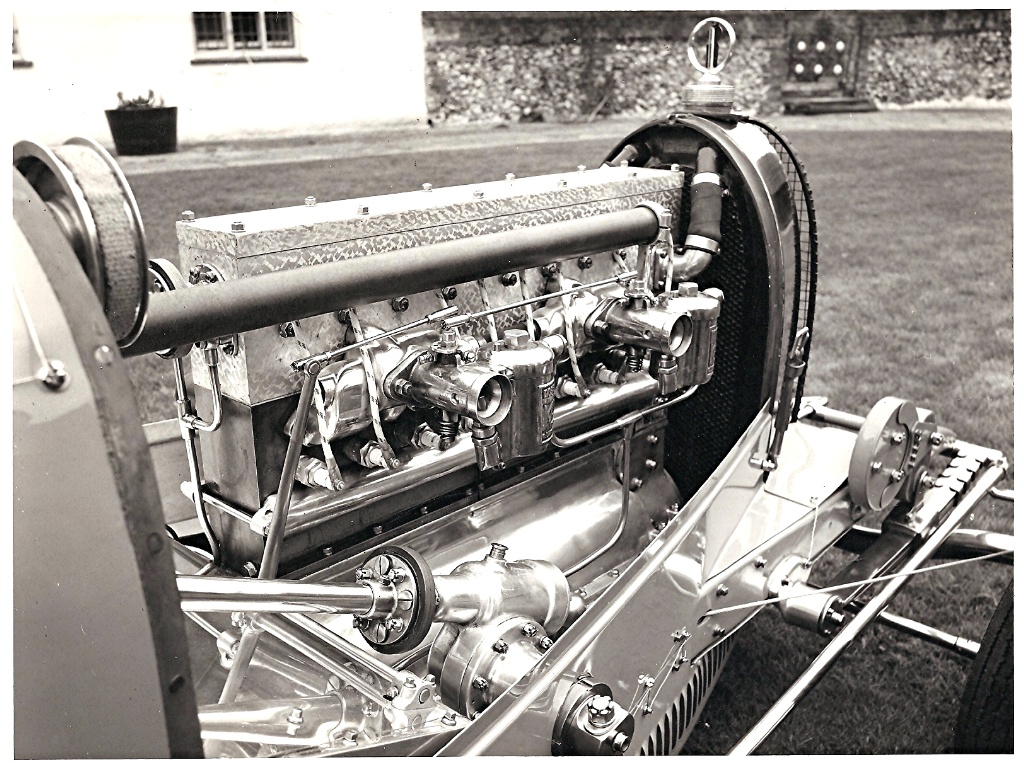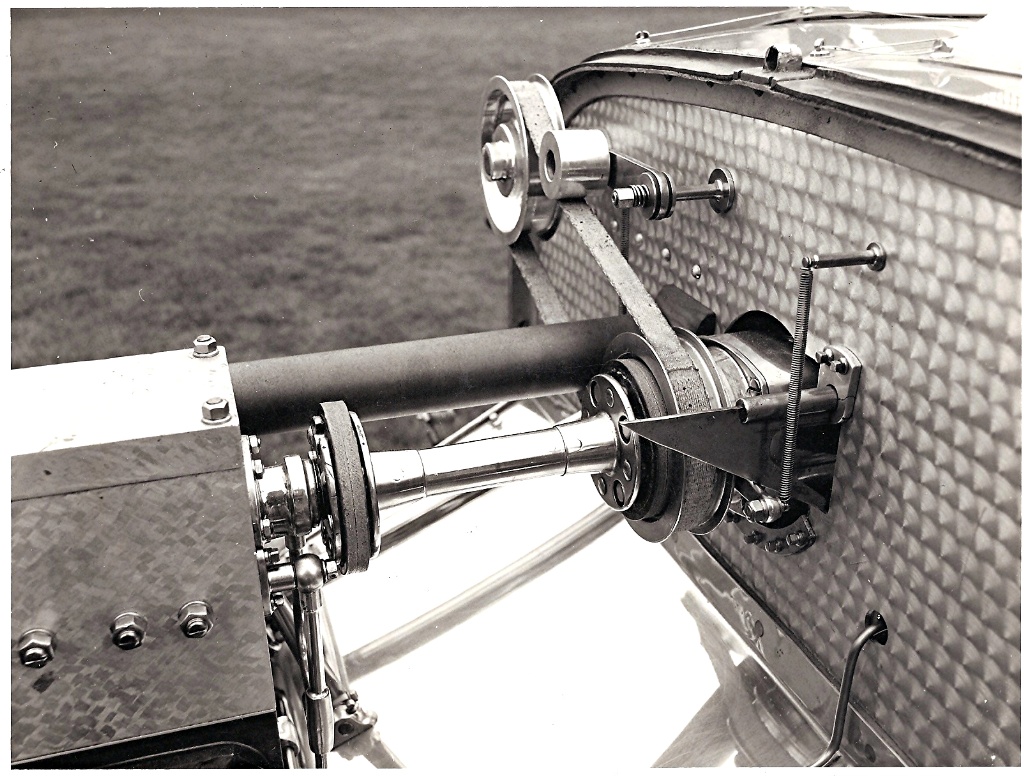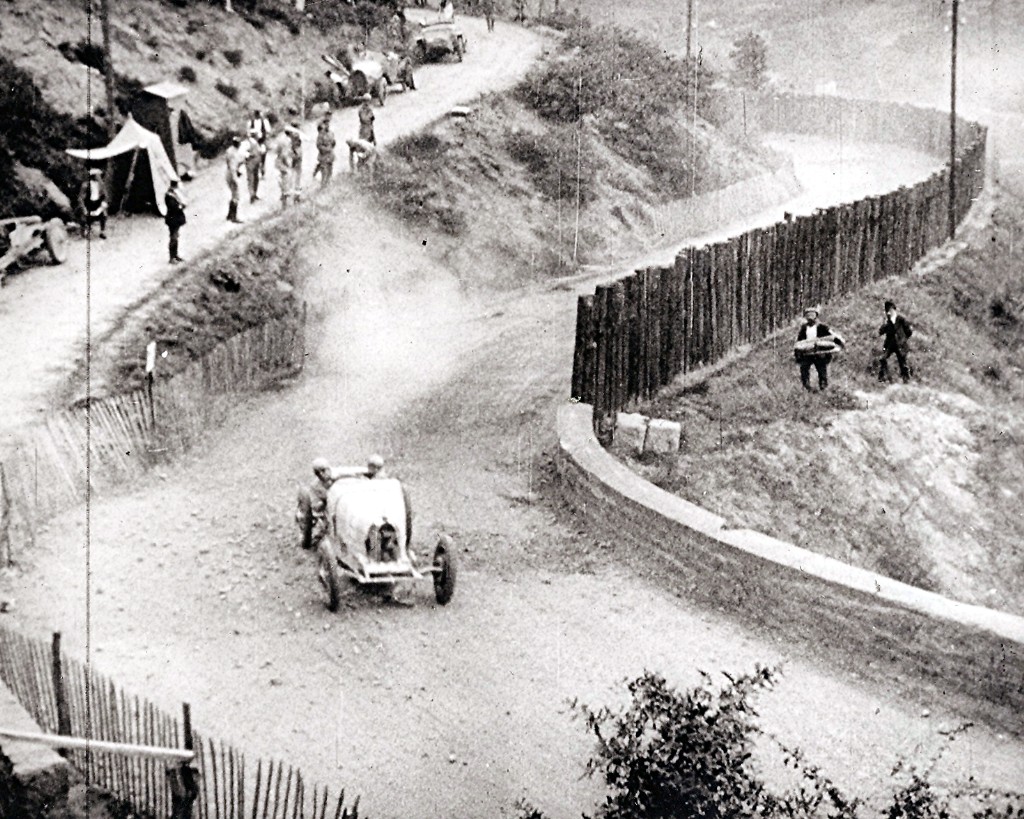Peter Giddings Racing
1924 Grand Prix Bugatti Type 35 LyonsEngine Number 3 Chassis Number 4325I have owned this car now for approximately three years [in 1972]. I brought it to America when I came here to live approximately one year ago. According to the Bugatti experts, and also to the best of my belief, this car is absolutely unique and is the only surviving complete Lyons car in existence anywhere in the world. It was discovered by me on a farm in Spain. Once the car was authenticated by Mr. Hugh Conway, I determined to effect the best Bugatti rebuild ever. After considerable research and enquiry, I decided to give the "carte blanche" rebuild to Tula Engineering of Kimpton, England. This engineering company, in my opinion, knows as much about Bugattis, if not more, as any other like organization and had already been responsible for the rebuild of two type 35 Grand Prix, a type 43, two type 57s; plus extensive work on a type 59. Some two years later, my car was finally finished after my having spent thousands of pounds on parts and refurbishing and nearly 4,000 hours of labour! In 1971 my car was entered for two concours and was the outright winner of both, one on each side of the Atlantic. These were the Bugatti Owners Club Concours in Sutton Coldfield, England where it won the famous "Brescia" trophy and the Club de la Carosserie Concours in the USA where it won the "Moet Chandon” cup. I think that some of the finest Bugattis, both concours and mechanical wise, are in England, so winning the Brescia trophy was a tremendous honour. However, the climax of all my researches, money and hard work came when the B.O.C. in their editorial of Summer 1971 suggested that my Bugatti be used as the "standard by which to judge other restorations"! As I have always believed in competing with my vintage raclng cars - vintage racing is much more popular in England than it is here at the moment - I have gone to tremendous lengths to ensure that mechanically my car is absolutely A1. This has involved me in the making of new crank sections, two new rods, complete re-rollering, balancing, line boring, line boring of camshaft, rebuild of camshaft, etc. So perfectly has this work been done that on the two occasions on which it has been taken to Lime Rock, Connecticut, I have achieved averages of near 70 mph! I have gone to extensive efforts to ensure originality. For example, the epicyclic gear mechanism, the workings of which were finally solved by Louis Giron who is now Lord Montagu’s chief mechanic, was in 1924 an apprentice at Molsheim, and actually remembers my car being built. From Giron’s rough sketches, draughtsmen at Rolls Roytce were able to compile over seven detailed parts and working drawings. This little gear box is typical of the Patron’s skill and ingenuity, it effecting a 2:1 step-up ratio, a means of reversing the direction of drive, plus a means of altering the relationship of the engine to the magneto, all the while retaining a straight line drive between the magneto and camshaft! This, and some 40+ other features, differentiate between the Lyons cars and the later production Bugatti Grand Prix. These differences are a fascinating insight into the transition of the Grand Prix Bugatti, and indeed even prove the mistakes that the great man himself could make from time to time. For example, much has been said of Bugatti’s genius in designing the Grand Prix chassis which deepens toward the greatest point of stress just below the bulk head area on the production model. However, all his first six pre-production Lyon cars had straight-sided chassis, and only after chassis twisting was experienced, did Bugatti affix to the lower edge of the chassis below the bulk head a triangulated section to strengthen things up! Other differences include a wire aero screen, flat round bead fixing of the wheel rim bolts, subtle clutch mechanism differences, unlined shock absorbers, a reworked re-geared “Brescia” gear box, rear engine mounts incorporating brake guides also acting as additional chassis strengtheners, wooden strengthening fillets, pressed, and bolted into the front dumb irons (I have the original one which has a delightful French 3 inscribed upon it - perhaps by Bugatti himself?!), rear axle trumpets turned from the solid, different gear box supports, different bulkhead, “KAP“ carburetors, cam box taken from the type 30 or 38 "tank" car, different radiator, different brakes, different tachometer drive, etc., etc. Please note that to retain the complete authenticity of this historical Bugatti, all original finishes have been applied, i.e., despite the plated appearance of all metal parts, there is absolutely NO CHROMIUM PLATING ON THE CAR WHATSOEVER, ALL STEEL AND ALUMINUM PARTS BEING POLISHED AND OILED. Special tools have been made to reproduce exactly the unique hand scraping which appears on the cambox, etc. The paint work has been largely hand done and finished and consists of eight coats, not including undercoats, etc. The countersunk wheel bolts, hub nuts, etc., have been finished in authentic “engined blue.” (Written by Peter Giddings in 1972) ----------------------------------------------------------------------------------------------------------- During the winter of 1923-24 the Bugatti factory at Molsheim was hard at work on the first batch of type 35 Grand Prix cars. The engine configuration of these early cars was a straight-eight unblown 2-litre, with bore and stroke 60 mm x 88 mm. The built-up crankshaft ran in five main ball and roller bearingswith roller bearing big ends. The cast iron blocks were two four cylinders with integral heads bolted directly to an aluminum crankcase, with valve gear, three valves per cylinder , and single camshaft located in the cambox which in turn bolted on to the blocks. The engine developed 90 b..h.p. and revs were safe up to 6,000 which represented about 110 mph. Performance was equivalent to the standing quarter in around 17 seconds. The chassis was a flexible unit consisting of two deep side members tapering towards the middle with a pair of split tubular cross members for mounting the gearbox. The crankcase slid into place and was finally located with 16 bolts passing through the chassis. The rear crossmember was riveted, the front tubular one being bolted to the chassis from which the springs were hung. The body followed the same contours as the chassis from the horseshoe radiator to the sloping pointed tail, the end result being a beautifully proportioned small two-seater racing car. ... The first time the type 35 appeared before the publlic was at Lyon for the European Grand Prix. The cars by virtue of of their appearance and standard of manufacture caused a major sensation in the paddock. The Bugatti factory took six cars to Lyon for the European Grand Prix on August 3, 1924. The prototype for display and five others entered for the Grand Prix to be driven by Chassagne, Friderich, Pierre de Vizcaya, Garnier and Constantini. ... On lap 10 Vizcaya crashed his Bugatti and retired. The Pierre de Vizcaya Bugatti which crashed on lap 10 at Lyons is considered to be that now owned by Mr. Peter Giddings of London. The chassis is number 4325 with engine number three. The de Vizcaya car was kept by the family in Barcelona untiil 1929 when it was returned to Molsheim. The factory fitted electrical equipment and converted the Grand Prix bodywork to a touring two-seater. In 1931 the car was purchased by Martinez Moreno. Since 1932, the car was literally lying around in bits , many of which were lost. In 1968 Martinez decided to sell the car, many people were interested. Up to this time Peter Giddings had been corresponding with Martinez on Bugatti matters, and consequently knew of the impending sale. However, a dealer from Madrid purchased all of the Martinez cars and paperwork and photographs associated with them . The same dealer then wrote to Peter Giddings and a deal was made for what was thought to be "an early Grand Prix Bugatti." Up to this point it was not known by either the dealer or Peter Giddings that the car was a Lyon type. It eventually arrived in England during March, 1969, and went to Tula Engineering in July. The entire car was in appalling condition, having been fitted at some time with a Lancia engine, tool and battery boxes and wings and stays. Today the car is in mint condition and perfectly original in every respect as in fact it was at Lyon forty-seven years ago. It was recently the outright winner of the Bugatti Owners' Club Concours d'Elegance in England and now resides in New York with its owner where it will stay... (Extracted from the article "Bugatti-Vizcaya-Lyon" by Richard Crump in Veteran and Vintage Magazine, Vol. 16, No. 6, February 1972) The Lyon Bugatti is now on exhibit at the Beaulieu National Motor Museum, New Forest, Hampshire, U.K. The 1924 Bugatti "Lyons" Type 35 on display at the home of Henry Austin Clark on Long Island. It won the
Judy and the 1924 "Lyons" Bugatti Type 35 at Lime Rock. Peter and Judy had this very special and unique car restored by their friend Richard l'Anson, who as a result founded Tula Engineering, which company continues to this day in the capable hands of Charles Knill-Jones.
Our Lyons Bugatti undergoing restoration at Tula Engineering.
Can there be prettier lines? This photo was taken at the home of Austin Clark shortly after our Lyons Bugatti arrived in the U.S.
Here is the Lyons Bugatti -- restored at last! Hugh Conway had said: "...too far gone and too incomplete..."
The restored dash showing the metal grille windscreen and the (unique to the Lyons cars) push/pull advance/retard control of the magneto.
The engine bay and KAP carburetors of our Lyons Bugatti, fresh out of restoration.
The incredibly detailed metal finish work of the restored Lyons Bugatti engine.
Drive system and detail of the unique push/pull advance/retard control of the inline magento fitted to all of the Lyons Bugattis.
Our Lyons Bugatti during the 1924 French GP at Lyons -- Our car has just hit the fence and is rolling to a halt. |
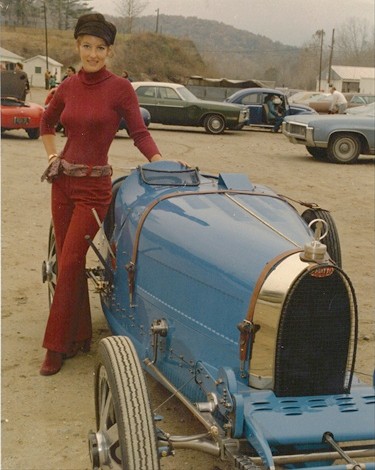
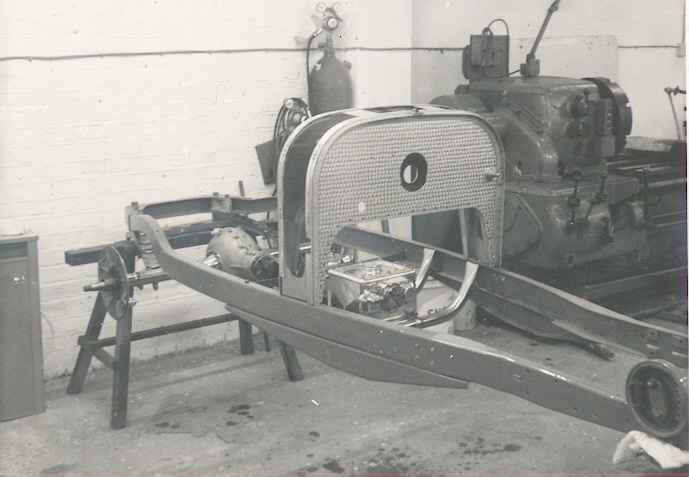
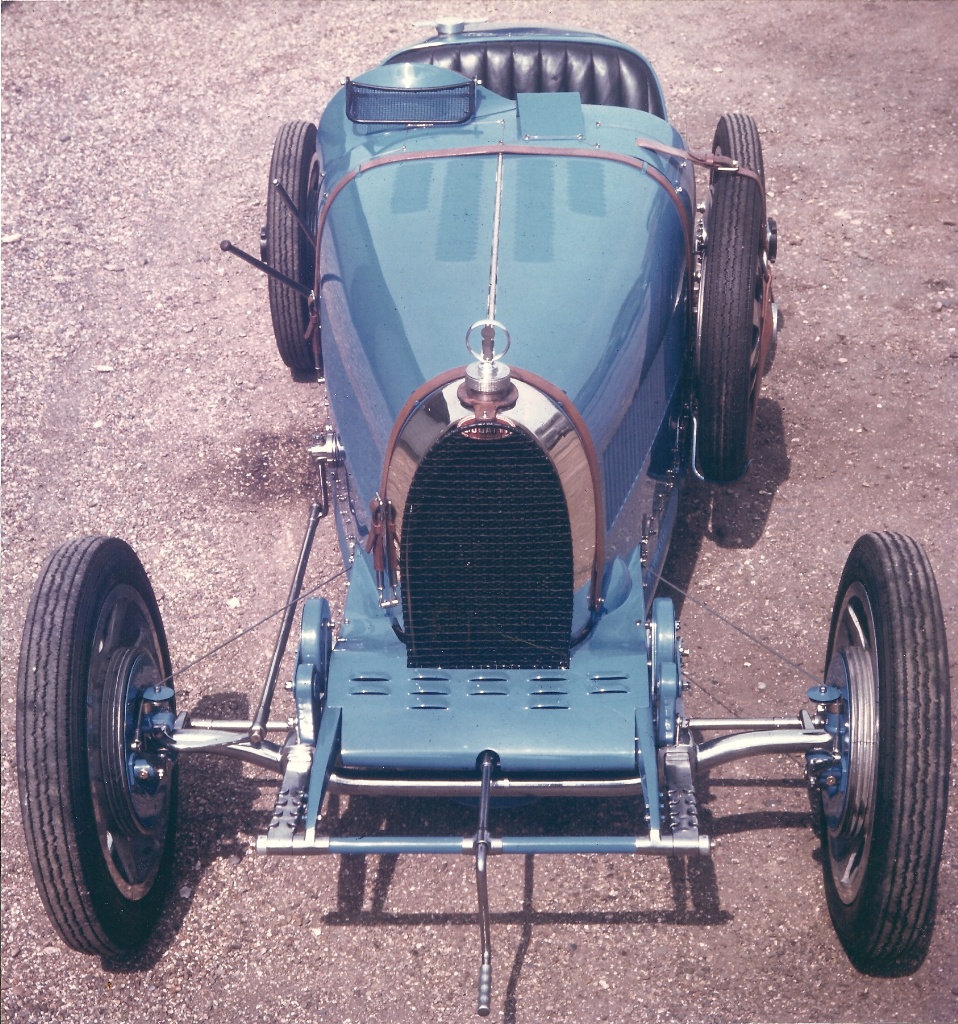 .
.